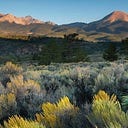A Panamanian Lens on Marine Conservation
The Moore Charitable Foundation through its Panama affiliate, The Islas Secas Foundation, is proud to partner with Panamanian conservation champions. Catalina Gómez, grants and partnerships consultant to the Foundation, plays a critical role in working with local marine conservation leaders to conduct scientific research, improve fisheries regulations, and the enforcement of marine protected areas (MPAs) and tackle illegal fishing. In the first of our two-part Medium series celebrating ocean conservation, learn how The Islas Secas Foundation is partnering with NGOs, scientists, and local communities to be a leader in safeguarding marine habitats and the species that depend on them in the Coiba and Chiriquí regions.
MCF: Can you paint a picture of marine conservation in your region? Has Panama participated in any marine conservation actions of note?
Gómez: Panama is a marine conservation leader, protecting 54% of its oceans. This protection extends from mangrove forests to coastal coral reefs, oceanic islands, and the open ocean, protecting various marine ecosystems and species, from small reef fish to large migratory megafauna.
MCF: What are the biggest challenges facing marine conservation in Panama today, and how do you think we can best address these challenges?
Gómez: I see two main challenges. The first is enforcement. All this protection is useless unless Marine Protected Areas (MPAs) and their regulations are enforced, which is a main challenge today, especially with uncontrolled illegal fishing from small artisanal vessels to large industrial fleets. The second is unsustainable shore development. Private economic interests sometimes are stronger than the public welfare and the welfare of fragile marine and coastal ecosystems that benefit all, like mangrove forests and coral reefs. Although they are both protected by law, they still face imminent threats. El Centro de Incidencia Ambiental (CIAM), a team of lawyers and environmental specialists, is a great example of an organization dedicating its time, resources, and know-how to making sure mangroves in particular are saved.
MCF: Can you share the results or a success story that illustrate the effectiveness of an initiative The Islas Secas Foundation is funding?
Gómez: Education is the key to long-term social changes, including a society that respects nature and develops sustainably. Most of our projects have an environmental education component impacting students from primary school through graduate studies. We have two signature projects. With The Islas Secas Foundation support, Audubon Panama implements an environmental education curriculum in five public schools in the Gulf of Chiriquí, and over the course of 8 years, more than 1,700 students have participated, passing the message to their families, and their communities. These communities are now aware of the benefits of and threats to the mangrove ecosystems that surround them, and they take action to protect them.
Another signature project is with the Smithsonian Tropical Research Institute (STRI), which offers top-ranked graduate courses in tropical biology and conservation. With Foundation support, STRI includes more local students in these classes, creating highly qualified local capacity in a wide range of areas. These two programs cultivate the next generation of marine-conscious leaders and decision-makers.
Finally, the work that Callie Veelenturf and the Leatherback Project has done on the Rights of Nature law in Panama has been incredible. With a law signed in February 2022, Panama became one of a handful of countries that recognizes the Rights of Nature at the national level, which allows rights-based governance of Panama’s varied ecosystems.
MCF: How important is collaboration with other organizations, governments, and stakeholders in marine conservation strategy? Can you provide an example of a successful collaborative project?
Gómez: An effective integration between the scientific community, conservation NGOs working with local communities, and local authorities is the key to successful projects. For example, our grantee Marviva. Marviva relies on scientists to produce objective data, including biodiversity hotspot identification or the reproductive time for a particular species. Then Marviva interacts with local communities to learn how the community currently uses a particular resource and its economic and social impact. Then, Marviva integrates all this information to propose science-based, socially responsible regulations. Finally, Marviva works with local authorities to facilitate the enforcement of such regulations, from capacity-building to implementation of technological tools.
MCF: Are there innovative approaches or best practices in marine conservation that you have found particularly effective in your region?
Gómez: Illegal, Unreported, and Unregulated (IUU) fishing is a huge threat to healthy marine environments, and it is hard to monitor and quantify, especially in isolated areas. Satellite transmitters such as AIS and VMS, which are small devices installed on artisanal and industrial vessels, are great management and enforcement tools. A group such as Global Fishing Watch offers open access global maps of fishing practices and other human activity affecting oceans to inform policymakers. Combining that knowledge with local monitoring stations run by national authorities facilitates identifying critical areas where IUU takes place and guides key actors — countries, vessels, owners — to deploy resources where they are most needed.
